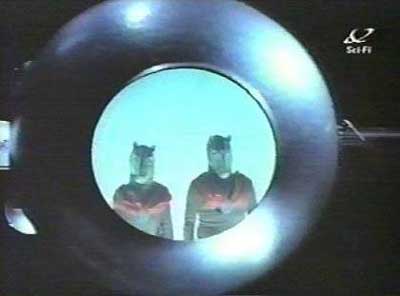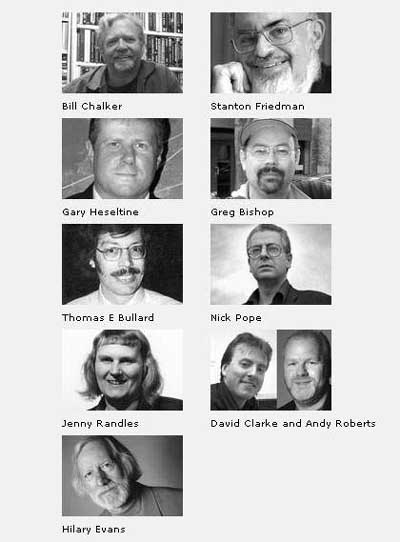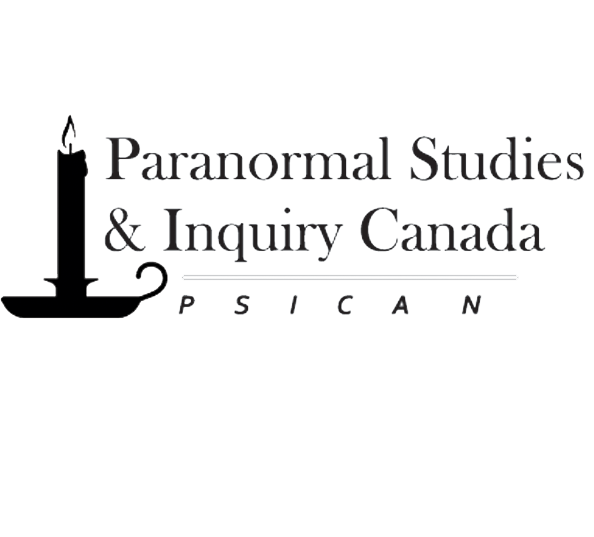Canadian historian Christopher Laursen reviews the Fortean Times’ retrospective on 60 years of UFOs in popular culture.
I remember a dream I had once when I was a teenager. In it, I drew apart my curtains and looked out of my window to see hundreds of flying saucers slowly hovering by at low altitude. There was nothing that would stop them. I had such a feeling of dread in the dream. Earth was being invaded.
I blame it on a TV show I saw when I was a wee one. It was called Project UFO (1978-79, NBC). I was at my parent’s friends’ house, sitting on their lush beige livingroom shag with their son. From what I recall, the episode commenced with a woman in a high-rise apartment, and a flying saucer was going around the tower. She opened her curtains – and voila – a window opens in the saucer hovering right outside of her apartment. And what has she come face to face with? Two horses! Egad! A quick Google reveals that I’m not the only one who was fascinated by the horse-headed aliens.

The horse-like aliens in an episode of Project UFO. (From The Project UFO Page)
That silly introduction over with… what a great time to celebrate 60 years of ufology! The X-Files is gathering dust in the annals of TV cultism. Mediums, ghosts and superheroes have captured the television crowd now. One can actually take a pretty sober look at what has happened over the past 60 years, remembering of course that aerial phenomena has been reported long before 1947.
Fortean Times (FT225, Special 2007) does an excellent 33-page retrospective on the topic, asking several knowledgeable people what they think the best evidence is for (or against) this phenomena, talking about terrestrial versus extraterrestrial origins, recalling some strange sightings and asking what their overall opinion is of the past 60 years of ufology.
The issue includes an excellent article by Alan Murdie, best known for his articles on ghosts, on pre-1947 aerial phenomenon in New Mexico, going back to early Native lore and experiences where it seems that strange lights were very much a part of the natural world. There are interviews with controversial abduction researcher Dr. David M. Jacobs (who isn’t afraid to denounce the cruelty of the abduction accounts he has collected), some photos from the McMinnville UFO Festival, looking at the Betty and Barney Hill abduction case of 1961, and an indepth profile of the late Desmond Leslie, “the founding father of the modern fascination with alien contact.” Also interesting are the stories behind stamps that depict UFOs from countries such as Equatorial Guinea, Tanzania, Grenada and Guyana – not exactly places that come to mind in the popular context of aliens. But UFOs, it is clear, have touched every corner of our humble blue planet.
Each of the researchers who speak on the past 60 years of ufology tend to put their own local geographical spin on what they think the most important evidence is. For example, Australian researcher Bill Chalker unabashedly refers to a multiple-witness, radar-visual case involved the Australian Navy in 1954. Many of the experts concur with Chalker, choosing evidence where military, meteorologists or air traffic control all had technical evidence, often from radar, to match eyewitness reports from the ground or the air. Interesting cases for certain! But…
“All ufologists learn something unique about the UFO phenomenon and like everyone else, our interpretation of the data is subject to our own interests and prejudices,” wrote David Clarke and Andy Roberts, regular contributors to Fortean Times. “As a result, there is very little consensus, which means ufology remains disorganized, chaotic and belief-driven.”

Some of the experts who offer their point of view in the Fortean Times. (From the Fortean Times)
French sociologist Pierre Lagrange talks about how important it is to seek connections between unidentified flying objects and natural phenomenon. He offered further explanation as to why ufology, as a field, is chaotic. “Most of the debate is focused on how to obtain ‘objective’ data from witnesses,” he wrote. “But the fundamental problem is that the alleged divide between subjectivity and objectivity doesn’t exist – it is a pseudo-argument invited by sceptics to maintain an endless controversy.” Lagrange calls on researchers to abandon seeking this objective data from the witnesses themselves, for objectivity is not a mental quality, but rather one developed through observation with specific goals. He suggests, for example, that an organized network of amateur astronomers would be excellent to collect data around the world on aerial phenomenon.
Here lies another key to resolve this chaos, Lagrange suggests, in “that ‘sceptics’ and debunkers are not interested in the solution to the mystery, and that UFO researchers confuse debunkers with scientists because some scientists are debunkers. But science is something completely different.” He’s got a good point there! The question from all of this input is could ufologists put their personal interests and prejudices aside to actually organize? Could they seek objective evidence through a network of sky gazing observers and take witness reports for the subjective data they present? Some good points to ponder among many in this issue of Fortean Times.
The problems faced by ufologists over the past 60 years has made many of them cynical, and many comment in Fortean Times that they feel little to nothing has been learned since 1947. Others concede such a viewpoint is quite extreme. For example, common characteristics can be derived from sightings. Police detective and ufologist Gary Heseltine, editor of UFOMonthly.com, wrote, “These objects have the ability to stop and hover in complete silence, to make instant bursts of acceleration and deceleration, to reverse direction, make right-angle turns and rise and fall vertically. And there are five basic shapes – disc, cigar, sphere, triangle and bright white lights.”
Yes, these are all common traits in many sightings. But what a variety of sightings there are. We’re not just talking about flying saucers or grey hairless aliens with large black eyes. There seems to be every kind of shape and size of object, in every type of situation, from a far-off sighting of a strange object high in the sky, to very close encounters, to even being taken into the craft by a variety non-human beings. And what of the parallels found in popular culture, including science-fiction movies from The Day The Earth Stood Still to Close Encounters of the Third Kind to Contact? How do these all filter into the public imagination and influence the recollections people give of what they saw? Close Encounters, after all, coincided with a massive wave of reports in 1977.
It all is a good reminder that people can only describe things they cannot explain within their own perceptual contexts. People can only go so far in describing something which is often fleeting, moreso when it looks unlike anything they have ever seen before.
All of these questions and many more are addressed in this issue of Fortean Times. Worth picking up for avid ufologists and those interested in strange phenomena alike!
Ponder this, gentle readers…
What UFO story, fact or fiction, first grabbed your imagination?
Further Reading:
Fortean Times
http://www.forteantimes.com/
Karl Pflock and Peter Brookesmith, editors. Encounters at Indian Head: The Betty and Barney Hill UFO Abduction Revisited. Anomalist Books, 2007.
Stanton Friedman and Kathleen Marden. Captured! The Betty and Barney Hill UFO Experience – The True Story of the World’s First Documented Alien Adbuction. New Page Books, 2007.
Desmond Leslie and George Adamski. Flying Saucers Have Landed. Werner Laurie, 1953.
Jerome Clark. The UFO Encyclopedia: The Phenomena From The Beginning. Omnigraphics, 1998.


